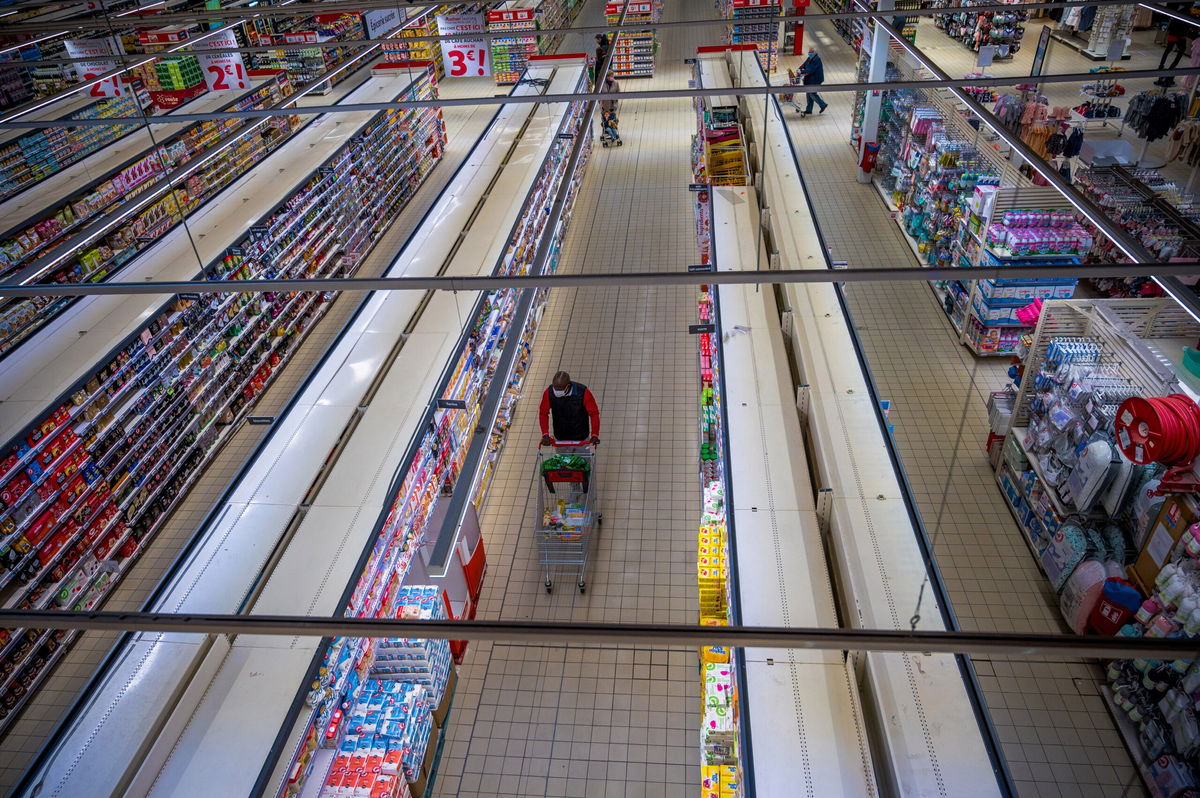Much of Europe is facing stagflation. France is already there

Spending by French households fell sharply in the January-March period as the European economy slowed down due to a combination of soaring inflation and early fallout from the war in Ukraine.
By Mark Thompson, CNN Business
The European economy slowed in the first three months of the year due to a combination of soaring inflation and early fallout from the war in Ukraine.
Preliminary first quarter data published Friday showed GDP grew by 0.2% across the 19 countries that use the euro, over the previous quarter. That was weaker than the 0.3% growth recorded in the final three months of 2021.
Consumer price inflation, meanwhile, rose to 7.5% in April — the highest since the European Union began keeping records 25 years ago. Rising costs for energy and food — driven higher by the turmoil in Ukraine and Western sanctions on Russia — were largely to blame.
“Russia’s brutal war against Ukraine has driven up prices for energy and foodstuffs, disrupted supply chains and dealt a serious blow to consumer confidence,” economists at Berenberg wrote in a note Friday. “As the most exposed major region globally, the eurozone has fallen into stagflation as a result.”
Germany, the region’s biggest economy, reported GDP growth of 0.2%. That was an improvement on the contraction seen in the fourth quarter of 2021. But the pace of activity likely slowed towards the end of the January-March period following Russia’s invasion of Ukraine on February 24.
“The economic consequences of the war in Ukraine have had a growing impact on the short-term economic development since late February,” the German statistics office said a statement.
The German government on Wednesday downgraded its growth forecast for this year to 2.2% and it has warned of a recession if Russian gas supply is cut off.
Its huge industrial base is already under enormous pressure from sky-high energy prices and global supply disruptions made worse by the war and sanctions. Manufacturing output contracted this month, falling to its lowest level since June 2020, according to survey data from S&P Global, and slumping confidence could spell a protracted downturn.
Germany, and indeed much of Europe, is now facing stagflation — the nightmare combination of high inflation and weak economic growth.
France is already there.
Europe’s second biggest economy stalled in the first quarter, with GDP flatlining and inflation hitting a new record high. Consumers responded by closing their wallets: household spending fell 1.3% in the three-month period.
Italy fared even worse. Its economy shrank by 0.2% in the first quarter.
It may take a while before the outlook improves, particularly given Europe’s exposure to trade with China.
“Worsening Chinese lockdowns and cautious consumer spending in reaction to high energy and food prices could easily cause a temporary contraction in eurozone GDP in Q2,” the Berenberg economists added.
The-CNN-Wire
™ & © 2022 Cable News Network, Inc., a WarnerMedia Company. All rights reserved.